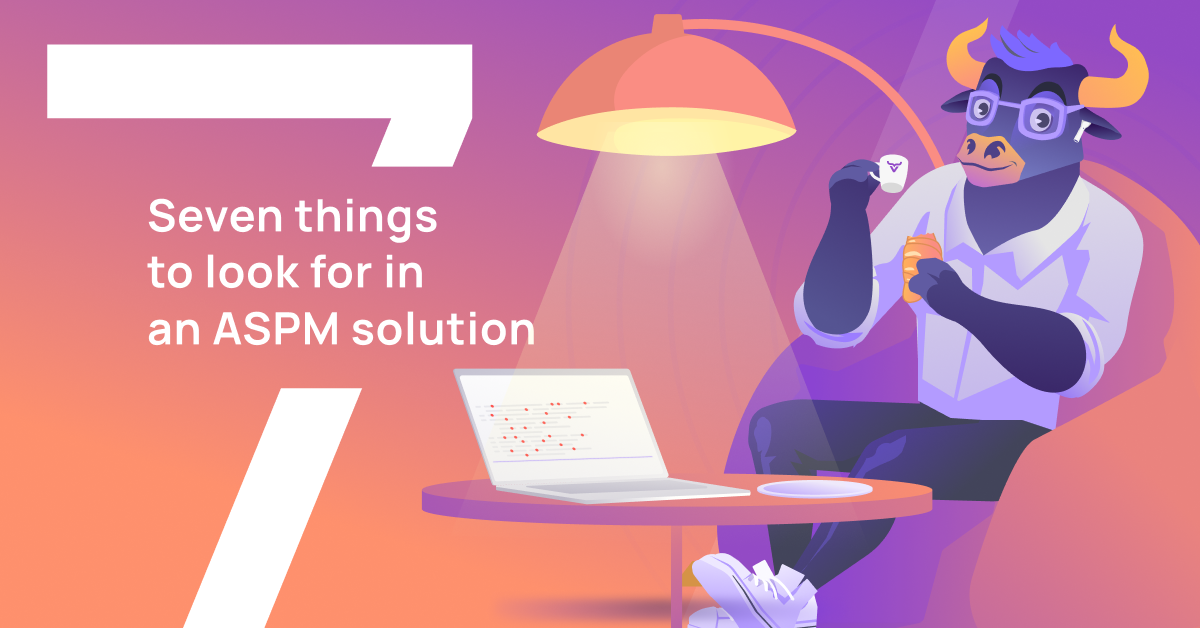The current state of application security is a bit like trying to solve a 1,000-piece puzzle that doesn’t include all the pieces. In the early days of AppSec, standalone tools were invented to tackle specific threats. Those tools served their purpose for the time and all was well. However, over time, as software development changed, attackers started to focus on its rapid evolution and the likely blind spots speed can create. As such, threats to the integrity of applications multiplied, as evidenced by the increasing number of successful attacks against them.
As this was happening, vendor companies were not asleep at the wheel. In fact, savvy entrepreneurs quickly noticed that there were significant gaps in software protection solutions, and new categories of tools were created to help builders of software protect not just software, but the process of building software. Subsequently, the number and types of AppSec and SDLC tools commercially available exploded.
What happened next was a chaotic mess: siloed tools, each spitting out data in different formats, creating more confusion than clarity, and generating alerts that could keep a person awake for days. Security professionals, try as they might, attempted to loop developers into the security process and insert AppSec tools into developers’ workflows. But these tools weren’t purpose-built for developers. They slowed down processes and frustrated developers. Developers pushed back, and the infamous turf wars between DevOps and security teams began.
Next came organizations’ attempts at DevSecOps, where security teams tried to literally embed security team members into development teams. This move was similarly met with resistance, and security teams had to find better processes — and tools — that would actually improve developers’ processes.
What was desperately needed was an approach to AppSec that provides both security and development teams with accurate results, relevant data, and low false positive rates. This would introduce a collaboration that would allow, each team to quickly understand the problems that arise throughout the entire software development lifecycle, and what needs to be done to launch secure, resilient software that enables business transformation.
Enter the data fabric — a smarter, more unified approach that offers a complete view of the security landscape and is quickly becoming the gold standard for application security.
What is a Data Fabric??
As with many cybersecurity categories, different constituencies have varying ideas about the definition of “data fabric.” For purposes of this post, let’s baseline that a “data fabric” is an integrated data management architecture that provides a consistent and unified way to manage and analyze data from a wide range of sources, formats, and digital environments. This architecture connects data silos, normalizes data sets for clarity, correlates them, then presents the data in a way that makes it easier to share, analyze, and act upon.
Now that we have a definition of “data fabric” established, what does it mean for AppSec teams, developers, and data owners? At least when it comes to application security and software supply chain security, we at OX think a data fabric is best for these eight underlying purposes:
1. Centralized Data Collection
Traditional security setups often rely on multiple, isolated tools that gather data in silos — this is especially true for AppSec, as the industry has grown tool by tool, stage of development by stage of development. This fragmentation makes it challenging for security and development teams to correlate findings, which leads to inefficiencies and gaps in coverage. A data fabric, however, acts as a central hub that aggregates and normalizes data from all sources — from native scanning tools to third-party integrations. This consolidated approach eliminates the aforementioned chaos of managing disparate data sets and provides a holistic view of an organization’s application security posture. The benefit: teams are able to detect and respond to threats more effectively.
2. Improved Data Normalization
One of the most significant advantages of a data fabric is its ability to normalize data from multiple sources into a consistent format. Why is this so important? Because different AppSec and general-purpose tools often use unique data schemas, making it difficult to compare and analyze information across the entire application portfolio. A data fabric takes these disparate inputs and harmonizes them into a unified format. The benefit: faster and more accurate analysis of software and all its components, all the way throughout the software lifecycle.
3. Enhanced Context and Prioritization
Raw data about vulnerabilities isn’t enough; context is queen. A data fabric doesn’t just aggregate data — it enriches it by providing crucial context, such as exploitability, reachability, and potential impact. This added context allows AppSec and DevOps teams to prioritize vulnerabilities based on real-world risk rather than theoretical severity, ensuring that the most critical issues are addressed first. The benefit: a more efficient use of time and resources, with remediation efforts focused on what truly matters.
4. Actionable Insights for Faster Decision-Making
With a data fabric, AppSec and development teams gain actionable insights, not just raw data. By combining comprehensive data collection, normalization, and context, a data fabric highlights critical vulnerabilities, suggests remediation steps, and integrates seamlessly with existing workflows to automate responses. The benefit: significant reduction in the time spent on manual analysis and accelerated decision-making processes, both of which enable organizations to mitigate risks faster and more effectively.
5. Reduced Alert Fatigue and Noise
One of the biggest challenges with traditional AppSec tooling (and security monitoring, in general) is alert fatigue. Traditional AppSec deployments often overwhelm teams with a deluge of alerts, many of which are false positives or low-priority issues. A data fabric dramatically reduces this noise (in OX’s case, by 97%) by intelligently filtering alerts and providing only the most relevant, high-priority issues for review. The benefit: the drastic reduction in alert volume helps prevent burnout and allows teams to focus efforts on genuine issues.
6. Increased Efficiency Through Automation
A data fabric integrates data from various tools and sources into a single, unified management plane, which enhances automation. Development and security workflows can be streamlined, from vulnerability identification to remediation, with less manual effort. The benefit: Teams can maintain a high level of security without manual intervention for low-level tasks. This allows humans to focus on strategic decisions that enable faster and more efficient issue resolution.
7. Reachable Vulnerability Insights
Beyond simply identifying vulnerabilities, a data fabric provides deeper insights into which vulnerabilities are reachable and exploitable. The benefit: This critical information helps AppSec teams understand the actual impact of potential threats, prioritize remediation based on actual risk, and reduce wasted effort on low-risk issues.
8. Simplified Compliance and Reporting
For organizations that need to demonstrate compliance with regulations like GDPR, HIPAA, or PCI-DSS, a data fabric offers an integrated view that simplifies reporting. By providing a consolidated, real-time picture of an organization’s security posture, a data fabric makes it easier to generate accurate, up-to-date compliance reports. The benefit: a decreased burden on audit, compliance, and security teams and improvement in overall governance.
Conclusion: Why Choose a Data Fabric?
In today’s complex application security landscape, piecing together data from multiple, disparate sources is inefficient, time-consuming, and error-prone. A data fabric provides a superior solution by unifying data collection, normalization, and analysis in a single platform. It offers a complete, contextualized view of an organization’s application security posture, reduces alert noise, and automates big hunks of the remediation process. By prioritizing the most critical threats and streamlining workflows, a data fabric enables DevOps and AppSec teams to be more efficient and effective, ultimately lowering risk across the entire organization.
Heard of OSC&R Framework? Learn about it here






